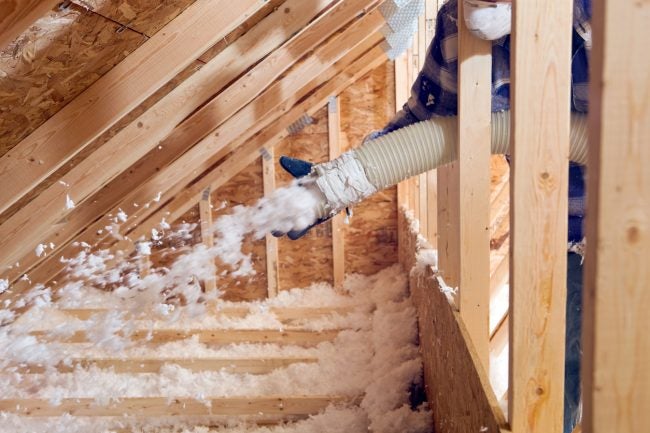
Courtesy-bobvila
Even though your attic is properly insulated there may be some air gaps that could cost you money. We shall learn about blow in or loose-fill insulation. When you think of insulation you usually think of batt or roll which is great between stud space and even joist spaces, break if you have a wide space or an open space. However loose fills work well in tight spaces or if there's already an existing layer of insulation then topping it off.
Joists permit air to movement upwards into spaces hence, they need insulation to be covered, or if you do go with loose-fill it'll have to be run in a machine. The type of material you're going to use is totally up to you but recommendable is fiberglass. The thing you need to look at most is the R-value or resistance to heat flow. The pyre the R-value the more the resistance. Now depending on your region or your climate, it's going to determine how much R-value you need.
The cooler the climate usually means higher the R-value. To know the amount of insulation you’ll need, you're going to multiply length into the width of your attic to get area in square foot. Then you refer to the back of the packet to determine the properties to get the right R-value for the project. Now to get down to work you first spray foam around pipes and in large gaps, and electrical boxes in in smaller spaces. For plumbing consider wrapping any water lines with a pipe sleeve. Go for online vidoes to learn more about how to install a blow in insulation and foil-backed insulation blanket.